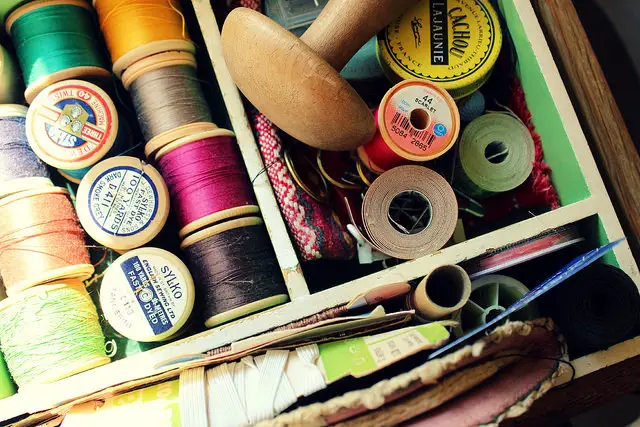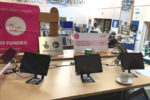Aspire in Ryde are running weekly ‘Mend and Make Do’ sessions at theoir Dover Street venue.
Taking place every Wednesday morning from 10am you’ll be able to get help with sewing machine skills, or even learn how to use a sewing machine if you’ve never used one before.
There’ll be several sewing projects – make a peg bag, beach bag or something else, as well as simple clothing alterations, or even perhaps trying making an item of clothing.
Mending and upcycling
The art of mending and upcycling was being lost, but now a whole new generation is picking up the thread and reusing what could end up in the trash.
Although the mending and upcycling of materials movement is still small, it is growing and people are coming round to the idea that you can’t just throw things out any more, you need to fix them or reuse them.
Dating back decades
Upcycling and mending items of clothing is not a new trend it dates back years.  It wasn’t just food that was rationed during World War II.
It wasn’t just food that was rationed during World War II.
Clothing also became scarce. Clothes rationing began on June 1, 1941, two years after food rationing started. Clothes rationing ended on 15 March 1949.
What was the Make Do and Mend campaign?
By Spring 1941 the amount of clothing reaching Britain was in short supply. On 1st June 1941 the UK Government introduced clothes rationing, allowing each person 66 clothing coupons per year.
In 1943 The Ministry of Information distributed the pamphlet ‘Make Do and Mend’, supported by advertisements in magazines and on newsreels. DIY fashion was born. One advertisement issued by the Board of Trade in 1942 declared:
“If you care for clothes you naturally want to take care of your clothes. This is a really important War job for every woman to take seriously today. Fortunately, you are rewarded for the extra trouble, not only by feeling that you are helping to win the War, but also by looking your best all the time. And you save money as well as coupons.”
1940s advice
Here are a few examples of 1940s Make Do and Mend advice:
- Turn worn-out sheets into tea-towels or glass cloths;
- Join a Make Do and Mend class;
- Rayon – don’t soak, dip them. Don’t boil them, use lukewarm water, don’t wring or twist them. Hang evenly so they do not pull out of shape;
- Always keep a needle and thread handy. Deal with a ladder or tear straight-away;
- Old bath towels can be turned into flannels and the more badly worn towels can be used for dusters or floor cloths. A swimsuit can also be made out of bath towels;
- Unpick dog biscuit or sugar bags and turn into tea towels;
- Hat netting can be made into fish net stockings;
- If your suspenders need renewing, knit 4 inch-wide bands and replace worn suspenders. Re-attach old grips to knitted bands;
- Sew loops on your towels and hang them up, they will last longer.
The Make do and mend campaign is very similar to the upcycling trend today. If you try one new thing this year, start upcycling!
Details of the weekly events can be found on Events OnTheWight.





